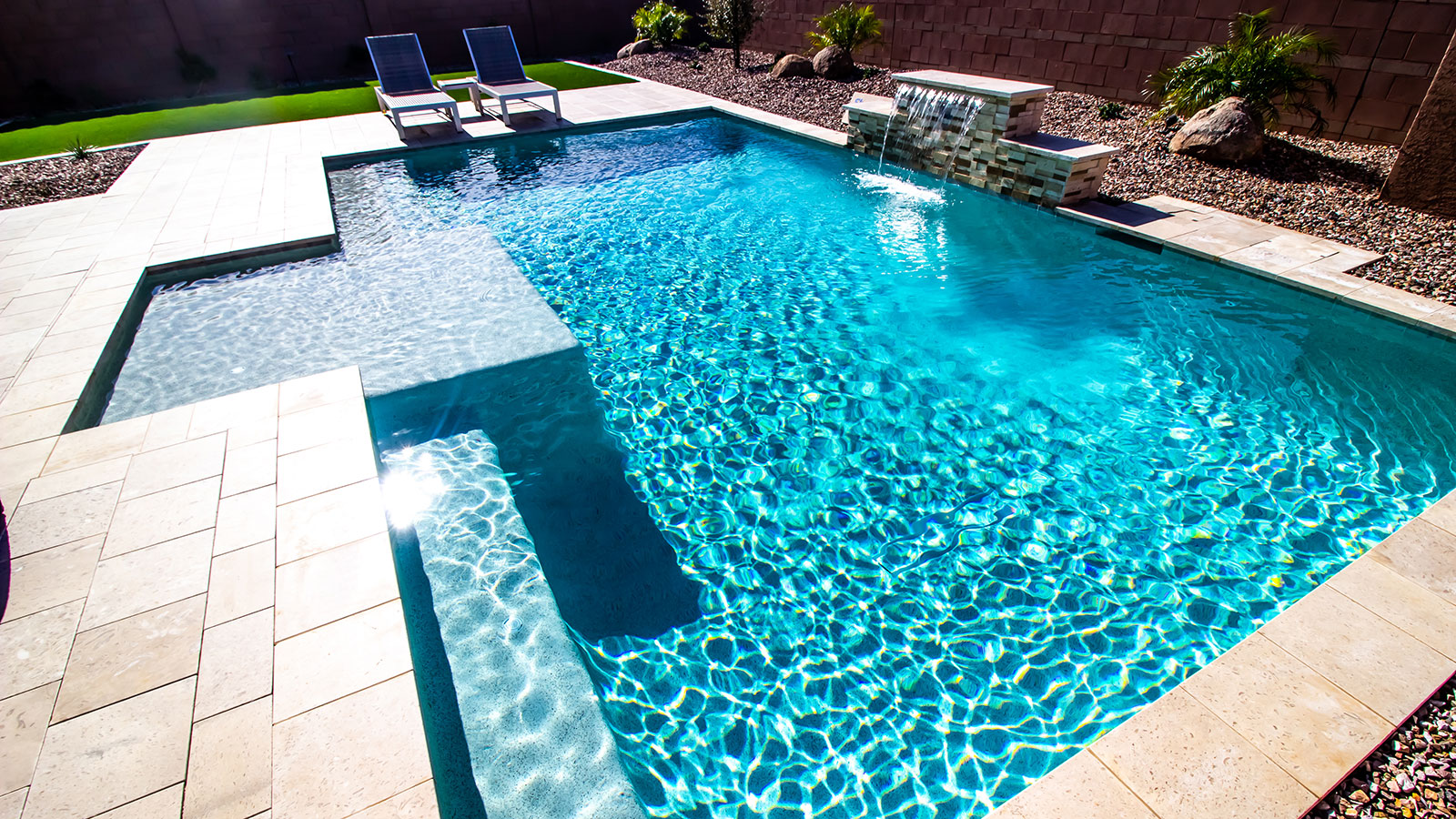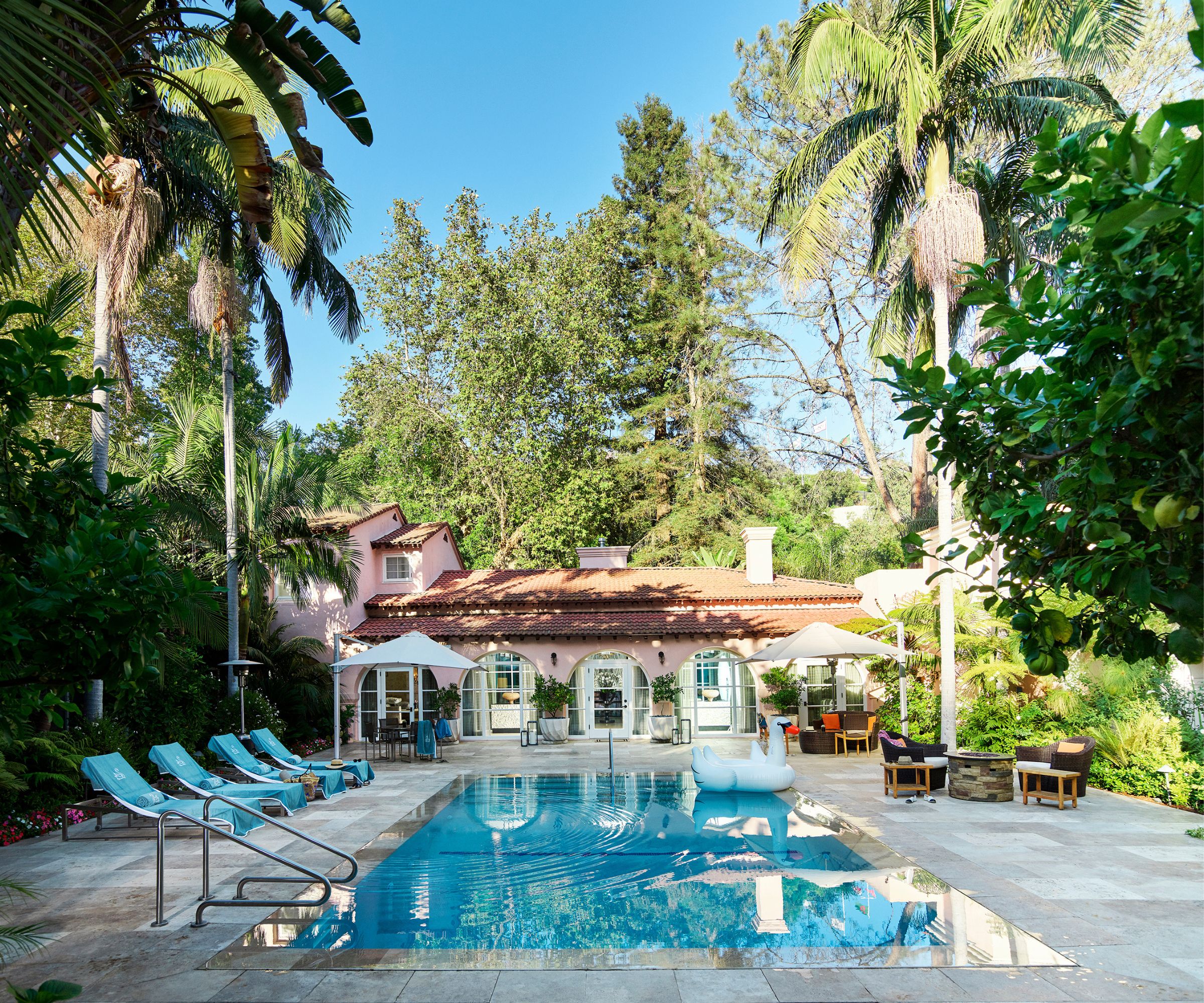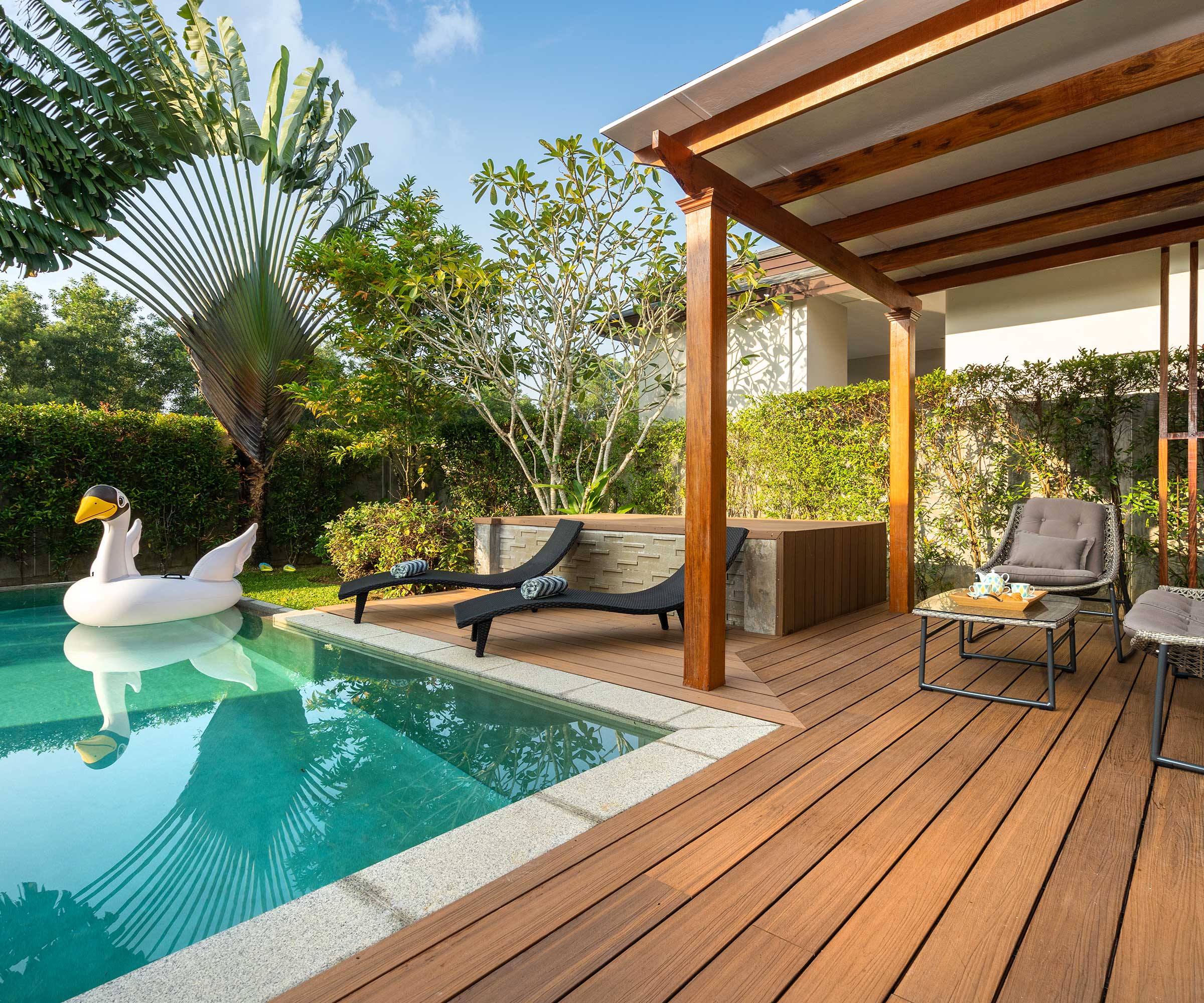How to cool a pool in summer – 8 ways to keep the temperature just right
Make sure the water temperature in your pool stays refreshing when the weather hots up with these strategies


It’s oh-so refreshing to get into a pool when the weather is at its hottest, but the feeling’s just not the same if that water is as warm as a bath. So, to keep it enjoyable and swimming a healthy activity it’s important to know how to cool a pool when the mercury rises.
And there are plenty of ways to ensure the water is the right temperature without compromising the style of your pool ideas. Whether hi-tech or tried and trusted, these methods can solve over-heating issues.
Here, we’ve gathered together the best options for you to use to create a pool that’s fun for everyone to use no matter how hot it gets.

8 solutions to cool a pool when temperatures rise
Allowing pool water to become too hot has a whole lot of downsides. It’s not a pleasure to plunge into, and anyone exercising seriously won’t enjoy their workout. Water that’s too warm also allows bacteria and green algae to thrive, so chlorine is used up quickly. The pool chemistry is adversely affected so you could end up with a cloudy pool, and you’ll need to shock the pool more often.
Rather than spend out more on chemicals, and make swimming less pleasurable than it should be, the answer is to take measures to cool the pool instead, and these are the strategies you can adopt.
1. Add a cover
A cover can help keep the pool at a refreshing temperature. ‘Covering your pool is one of the best ways to keep your pool cool,’ says Karen Larson, co-founder of Soake Pools. ‘Our plunge pools all come with covers that insulate the pool and keep heat out (in the summer). Interestingly, they also help keep the heat in during the winter.’
2. Use solar panels
If you have solar panels to heat the water in your pool, they can be employed to cool it, too.
‘Solar panel pool heating systems can be used to cool a pool during summer by employing nocturnal cooling,’ explains Hubert Miles, certified pool and spa inspector through NACHI. ‘This involves running water through the solar panel tubes at night or whenever the roof temperature is lower than the pool water temperature.’
In other words, your solar heater does double duty as the panels expel the heat and cool the water.
3. Install a water fountain
A water fountain can also play two roles. It can help cool the pool water and it can boost the appeal of the pool area. What’s more, one of these can be retrofitted to pools that didn’t have this feature in the original design.
A fountain will cool the water through the process of evaporation – just be sure to run the fountain when the outside temperature is cooler. That’s in the early morning, evening, and overnight when the air is cooler.
4. Run the filter at night
This is a strategy that’s easy to adopt when pool water is becoming too hot. Run the filter at night when the air is cooler and this can lower the water temperature somewhat. OK, it’s not going to make a huge difference, but every little helps to keep the water a more agreeable temperature.

5. Use a reverse cycle heat pump
Just as with solar panels, a heat pump can cool as well as heat. ‘The reversing cycle allows the pool heat pump to extract heat from the water, transfer it to the refrigerant, and release it into the outside air through the evaporator coil,’ explains Hubert Miles.
‘Some heat pumps only have on/off capabilities, while others can switch between heating and cooling modes. Multifunctional pool heat pumps equipped with a reversing valve and a dedicated reverse cycle function can remove heat from the pool water and transfer it to the surrounding air, providing efficient cooling for the pool.’
6. Try an aerator
An aerator can help keep pool water cooler – and it’s straightforward to fit and more affordable than some other options. Like a fountain it can lower the temperature of the water through its action of introducing oxygen to the water.
For maximum effectiveness, it’s best run at night when air temperatures are lower. Which brings us to a caveat: if nighttime temperatures don’t drop where you live, it may not be the answer for your pool.
7. Use an evaporative cooler
An evaporative cooler is another option when you want to lower the temperature of your pool. It needs to be added to the pool’s plumbing system and uses a fan to cool the water through – yes, the clue is in the name – increased evaporation. Once again, you’ll need to employ this solution at night.
Evaporative coolers are one of the more affordable options but, unlike a more expensive reverse cycle heat pump, they can only be used for a single job – that of cooling – not heating, too.
8. Create shade
Pool shade ideas can help everyone feel comfortable around the pool, but think shade for the water, too. Pool landscaping can shade pool water as can adding features such as an awning or shade sail.
A word of caution, though. Don’t use so many trees or other plants that the wind can’t blow across the pool. A breeze helps cool the water.
FAQs
What is the cheapest way to cool a pool?
The cheapest way to cool a pool with a dedicated piece of equipment is to use an aerator. One of these attaches to the side of an in-ground pool, and is connected to the pool’s piping. They’re best for hot and dry climates. A pool aerator also improves water circulation which improves the effectiveness of pool chemicals so it brings additional benefits.
How hot is too hot for a pool?
A temperature range from 78.8 to 86˚F is comfortable for most swimmers throughout prolonged periods of moderate physical exertion, according to the World Health Organization. It notes that the comfortable upper limit varies from individual to individual.
Overheating of the body can occur in hot tubs, to be sure to pay attention to the best hot tub temperature as well as checking the temperature in your pool.
A combination of equipment such as an aerator, evaporative cooler, or reverse cycle heat pump together with easy-to-adopt measures like running the filter at night and adding shade should prove the most effective way to cool a pool.
To check temperature invest in a pool thermometer that will provide you will accurate readings. This SplashTech floating buoy pool thermometer from Amazon is inexpensive and simple to use. Not only will a thermometer help you keep the water at a comfortable temperature, but by keeping the temperature in the recommended range you’ll save on chemicals.
Sign up to the Homes & Gardens newsletter
Design expertise in your inbox – from inspiring decorating ideas and beautiful celebrity homes to practical gardening advice and shopping round-ups.

Sarah is a freelance journalist and editor. Previously executive editor of Ideal Home, she’s specialized in interiors, property and gardens for over 20 years, and covers interior design, house design, gardens, and cleaning and organizing a home for Homes & Gardens. She’s written for websites, including Houzz, Channel 4’s flagship website, 4Homes, and Future’s T3; national newspapers, including The Guardian; and magazines including Future’s Country Homes & Interiors, Homebuilding & Renovating, Period Living, and Style at Home, as well as House Beautiful, Good Homes, Grand Designs, Homes & Antiques, LandLove and The English Home among others. It’s no big surprise that she likes to put what she writes about into practice, and is a serial house renovator.
-
 These are the 6 must-have colors to decorate with in April 2025
These are the 6 must-have colors to decorate with in April 2025What do retro-inspired yellows and beautiful blues all have in common? They're on our hot list for the season ahead
By Sophia Pouget de St Victor Published
-
 Plants never to grow next to fruit trees
Plants never to grow next to fruit treesExpert advice on which plants to keep away from fruit trees to encourage a healthy harvest
By Jacky Parker Published